How to gasify SNT: the intricacies of connecting to the gas main of garden houses
Tired of the bustle of the city, but there is neither the opportunity nor the desire to leave far? Or maybe you are looking for a new, quiet and comfortable place to relax? Agree, it would be great to extend the summer season for the whole year. Making a summer house all-weather is not so difficult - and we will help you with this. You will have your own little paradise where you can come to relax at any moment, or live quite comfortably for quite a long time, even in winter.
In this article we will tell you how to gasify SNT, even if there is no gas in the entire summer cottage, or to get and make gas in the house if there is a main pipe nearby. After that you will be able to install heating, perhaps to insulate the walls, and enjoy a summer vacation all year.
The content of the article:
Why gas in the country?
All summer cottages were originally built without the supply of communications: water, sewage, gas and, moreover, central heating. The only thing that is provided immediately is electricity. In principle, if you only rest in the summer at the dacha, and that is mainly between working in the garden, then this is more than enough.
Digging a small cesspool for the toilet, water for irrigation, as a rule, is supplied from the nearest body of water, and you can heat the brakes and make tea on electricity.
For the cold off-season and rare winter visits, in the country houses, a wood stove with a rough stove is often provided. Melt it, you can warm up and cook. However, this is not for everyone's liking, and it is not very convenient, and not cheap, to heat the stove every day, giving up the heat several times a day.

The advantages of the decision to gasify a country house are many:
- Gas is cheaper than firewood, coal or electric heating.
- This decision is more environmentally friendly - you do not harm either the forest or the atmosphere.
- Gas boilers are more convenient than wood and coal stoves: turn on and turn off in one motion, the temperature is also easily regulated, there is no need to maintain and control something
- Gas heating is the safest - no combustion products enter the room, and oxygen for combustion is taken from the street, the likelihood of an explosion or fire is minimal.
- If you decide to sell the cottage, gasification will significantly increase its cost.
In addition to heating, on gas, you can harvest preservation directly at the place of harvest, without breaking the bill on the electric stove. And if available own well, and a gas water heater for hot water can be hung to carry out hygiene procedures with familiar comfort.
What documents to follow?
The main existing documents for laying gas pipelines - Federal Law No. 69 “On Gas Supply in the Russian Federation” March 31, 1999 and Rules for technological connection of capital construction facilities to gas distribution networksestablished by Decree of the Government of the Russian Federation No. 1314 of December 30, 2013. The first document regulates the conduct of a common gas main, the second - the wiring from these highways to each consumer.
In addition, there is Federal Law No. 217 of July 20, 2017. “On the conduct by citizens of gardening and horticulture for their own needs and on amendments to certain legislative acts of the Russian Federation”, which spells out the legal framework for the activities of such organizations, their rights, obligations and principles of activity.
Options and features of gasification of SNT
The main difficulty in connecting a country cooperative to gas is the need for a collective decision.
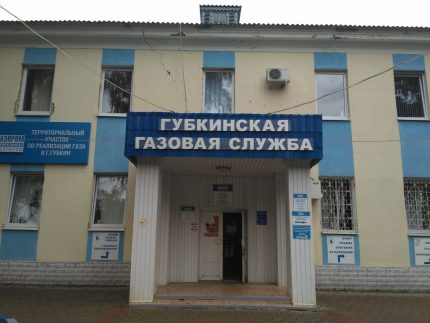
The ability to find a common language and compromise, in this case, depends not only on convenience, but also on the price and time of the project.
Option 1 - mass gasification of the village
To find out the opinion of the collective of summer residents, the head of the SNT organizes general gatherings on the issue of gasification. If you are lucky, and all members of the SNT agree to carry out gas - now or a little later - the head of the SNT will handle the documentation.
By law, complete unanimity is not necessary - a majority of the votes is enough, but the problem is that the amount of connection fees is mandatory divided into all in equal parts, including those that do not agree.
Convincing to pay a considerable contribution for the gasification of some pensioners who definitely do not need it, because in the garden there is not even a capital house, it is impossible. So there are debts of individual members to the SNT, relations deteriorate, sometimes it comes to litigation.
For those who, in principle, are not against holding gas, but are not ready to pay for it, it is proposed to conclude a loan agreement with those summer residents who promote the idea of gasification.

If such an agreement was reached, at the general meeting it is necessary to vote, collect the signatures of everyone who wants to bring gas to the house in SNT - there should be a majority of them. You also need to calculate the size of the contribution by dividing the total amount of investments by the number of members of the partnership. A record must be drawn up about this meeting.
This protocol must be attached to the application for connection - as well as the constituent papers of the partnership, confirmation of the powers of the chairman to declare on behalf of the whole team, drawing of land plots and copies of property papers for each plot.
Option 2 - connecting only interested summer residents
If the collective agreement cannot be reached in any way, but you don’t want to quarrel and sue the opponents of gasification, or even if there are a majority of them, there is a way out. Those members of the partnership who want to carry out gas can create their own organization, register a legal entity, and submit an application to gas producers on its behalf.

The type of enterprise itself is recommended to choose from 2 options: consumer non-profit partnership or consumer cooperative. The latter option is more difficult to complete and maintain, but allows you to legally make a profit if later on one of the neighbors decides to connect to the gas network carried out at your expense.
Option 3 - connecting the house to a common gas pipeline
It happens that there is already gas in SNT, the pipe goes along the boundary of the sitebut not brought into your home. For example, if you bought a plot after general gasification, but the previous owners did not support it. Is it possible to conduct gas in the garden house in this case?
Yes, but you need permission from the organization that conducted the pipe and contains it on the balance sheet of a horticultural non-profit partnership, consumer non-profit partnership, or, much less commonly, a gas service.
In this case, the owner of the cottage submits to the owner of the gas pipeline a package of documents, including a copy of the passport, permission from the architectural authorities, a topographic plan of the area, proof of ownership of the land and the house, a technical passport of the building from BTI.
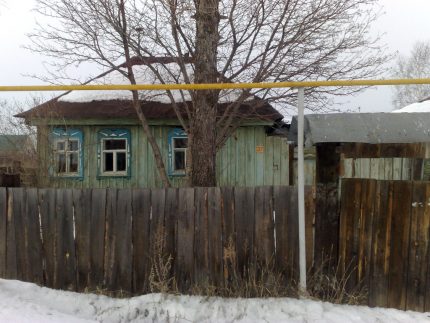
After obtaining permission from the owner of the pipeline, he and the next set of documents must be contacted by the gas service with a request for connection. Next, you should act the same way as the representative of SNT for general gasification - more on that in the next section.
Procedure, prices and documents
In each region, as well as for each specific case, prices for gasification services differ significantly. This is due both to the prices of various government agencies (primarily the gas supplier) for paperwork, installation and verification of a new branch, and to prices for materials, equipment and services of third-party companies, for example, designers.
The procedure and list of required documents may also vary slightly on the ground, or for specific situations, but the scheme as a whole is always maintained.
Stage # 1 - Partnership Discussion
This starting stage was touched a little higher. The question of the appropriateness of the gasification of SNT should be decided by its participants together, at a general meeting, against signature. Without the protocol of such a meeting, the head of the partnership simply will not accept an application for gasification - he does not have the authority to independently make such decisions.

In any case, based on the results of the meeting of the SNT or NP, it is necessary to draw up a protocol in which most of the partnership participants will signify their consent to gasification with signatures.
In addition, you need to prepare the rest of the documents that are attached to the application: drawings of all plots united by the organization, and copies of documents of ownership for each plot.
Stage # 2 - applying to the gas service
The first stage of communication with gas workers is to contact them with a written statement requesting connection. An authorized person from a partnership, cooperative or partnership submits an application - usually the chairman. He will need to present a document confirming representative authority.
The application must indicate the name and actual address of the summer cottage cooperative, as well as the documents mentioned above: the minutes of the meeting, the location plan and copies of property rights.

This, alas, often happens - for example, if that line was laid for a long time and was designed as a dead end, and now the maximum number of subscribers has already been connected to it, which can be provided with sufficient pressure at a given pipe diameter.
In addition, if the nearest existing gas pipeline, from which gas is planned to be laid in SNT, is not owned by the gas service, but, for example, is on the balance sheet of the same neighboring garden partnership, permission to insert from the owner of this gas pipe will be required.
To obtain such permission, you may need the following documents:
- The permission of the architectural and planning office, which, taking into account the density and type of development, will determine whether gasification is safe.
- A topographic survey of the area on a scale of 1: 500, on which all existing communications are marked, including the end of the pipeline branch to which connection is planned. This scheme must be certified in the gas service.
- Technical passports of buildings to be gasified can be taken at the BTI.
The gas supplier will review your application and decide if gasification is possible in this particular case.
Stage # 3 - obtaining technical specifications
So that the subscriber can prepare everything for connection to the gas network, the gas service prepares and issues it in advance technical conditions. This document lists absolutely everything that is needed for the further procedure: from a list of documents to equipment and materials, as well as requirements for them.

For each situation, the technical conditions are different, therefore they are developed individually, and this service, together with the execution of other documents, can cost from 8 to 50 thousand rubles.
To obtain technical specifications, you also need a whole folder of documents: a statement, a copy of the passports of the owners of gasified houses, copies of documents proving ownership of the land, as well as a topographic survey of the area.
It is worth remembering that TUs have a limited validity period, usually 3 years from the date of issue. During this period, you need to have time to completely finish all the work on connecting and checking all the specified objects.
Therefore, it does not make sense to immediately enter those summer residents who are not ready to carry gas into the house right now - until they carry out the main pipe, until all further issues with documentation are resolved, with delays on the part of the subscriber, you can easily not meet the deadlines.
Those members of the partnership who want to connect to the gas later will contact the gas service on an individual basis, independently re-passing all of the above points.
Stage # 4 - development and approval of the project
One of the most responsible and difficult stages - gasification project creation SNT.Everything should be taken into account in it: the availability of the pipeline for each participant, safe distances to buildings, electrical wires and other communications, ease of operation, maintenance and repair, the aesthetic side of the issue and some other factors. In addition, the gas service very strictly checks everything for compliance.

It is at this stage that most often involve third-party specialists who have experience in compiling just such projects. Often the same organization is involved in the development of the project, and the installation of the gas pipeline and equipment - by concluding such a comprehensive agreement you can save. Be sure to check the availability of a license for the right to work with the gas pipeline, as well as certification from installers.
It is most reliable to ask for advice from a design and installation organization directly in the gas service - they often cooperate and know who will not have to modify the project or digest the pipes. The project cost, depending on the scale, region and specific organization, usually ranges from 3 to 20 thousand.
If you want to lay the main gas pipeline underground so that it is not visible and does not interfere in the sections, or if you need to dig supports for an elevated gas pipeline, you will need permission from the Committee for Architecture and Urban Planning to carry out land works.
Stage # 5 - installation of the pipeline to the sections
After the approval of the project and its approval by the gas service, you can conclude an agreement on gas pipeline installationif another organization will do it. The first step will be an estimate of the work and a list of necessary materials and equipment.
When buying equipment, be sure to check that the certificate of quality and compliance with Russian standards is attached - it will be needed for further registration.
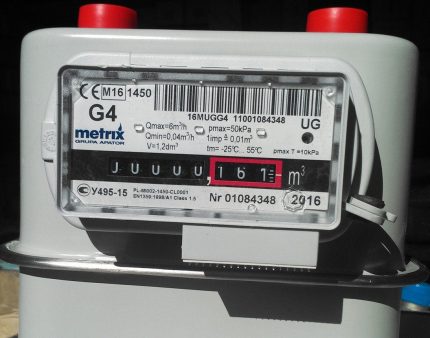
When everything is ready, it’s time to pay for the services of construction and installation works and insertions into trunk pipe, and specialists will proceed directly to the pipe. Connection to the highway - about 10-15 thousand - is paid by the gas service, the rest is paid to the construction and installation team. The cost of laying a pipe from the total to the garden house is about 2 - 5 thousand for each meter.
At the end of the work, a commission from the gas service must be invited to check the quality of the work performed. During the test, air is introduced into the already assembled pipeline instead of gas under the same pressure. The inspector also needs to pay 1 - 2 thousand rubles, at local rates.
And the owners of the new gas network, meanwhile, are again collecting documents: an act of technical condition of the gas flues, ventilation and chimneys of boilers from firefighters, documents on inspection and sealing gas metera, copies of passports and certificates of conformity of equipment, as well as service contracts and future commissioning.

Only in exchange for such a package of documents does the contractor hand over the finished gas pipeline, to which all the executive technical documentation is attached:
- gas pipeline acceptance certificate;
- construction passport of the gas pipeline and input;
- an act of hidden work (installation of supports or underground pipes);
- scheme of welding seams underground;
- shooting the outside of the pipeline;
- quality certificate for pipes;
- test reports of welds and welder certificate.
In addition, the customer is returned the technical specifications and the gasification project, officially agreed.
Stage # 6 - Final Events
When everything is ready and checked by the gas service, it will finally let gas through new pipes. The basis for this will be the concluded supply and commissioning agreement. Knowing full well that the next time they will not see you soon, even before the start, the gas workers will carry out all safety measures.
You will be required to enter into an agreement for the technical supervision of the gas pipeline, an agreement on the maintenance and repair of gas pipes and equipment in the house, a house registration certificate indicating the heated area, technical specifications, a design and acceptance certificate for the gas pipeline, an act for determining the boundaries of the separation of property, a passport for the meter and boiler, as well as the owner’s passport, ownership of the house and a certificate of registered residents, if any.
After concluding a gas start agreement, you will be given safety training, and when the pipes are filled with fuel, a specialist will come to set up the equipment. In conclusion, an expert from technical supervision will appear - for the final verification of the correctness of the connection and settings - and the saga with gasification can be considered completed.
SNT responsibilities after gasification
Like any communications, or maybe even more, the gas pipeline needs constant monitoring and maintenance. The pipes laid in the SNT are on its balance sheet, not the gas service, and therefore are serviced by the cooperative.
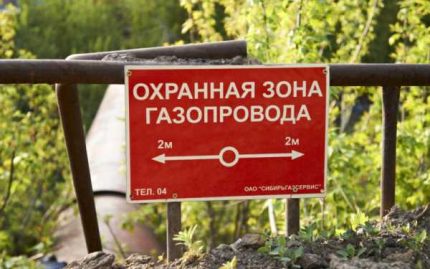
To ensure the safety of users, the legal entity involved in the organization of gas supply to the SNT is obliged to perform the following actions:
- conclude an agreement with the emergency service or create your own;
- Define security zones and restrictions for the areas included in them;
- maintain fire safety of these zones, make deforestation and shrubs in them;
- submit to the land cadastre maintenance service an executive survey of the gas pipeline, on which protected zones are marked;
- organize systems for monitoring and preventing accidents, alerts, communications, protection;
- develop plans for localizing possible accidents and eliminating their consequences.
There are more extensive requirements for gas owners and firefighters to the owner of the gas pipeline - they will tell you about this on the spot.
Conclusions and useful video on the topic
Gasification of SNT in the suburbs:
And how to connect a separate house to the gas pipeline is described in detail in this video:
Now you can choose which gasification scheme is suitable for your summer residence, and also imagine what bureaucratic procedures you will need to go through. Of course, connecting gas is quite an expensive pleasure. But it significantly increases the level of comfort in your country house.
Is there gas at your dacha? How much did the connection cost if it was with you? Do you often turn on the boiler and gas stove in the country? Join the discussion below.

 Gas on the border of the site - what does it mean? Features of connecting to an existing gas pipeline
Gas on the border of the site - what does it mean? Features of connecting to an existing gas pipeline  Replacing a gas stove in an apartment: fines, laws and legal subtleties of replacing equipment
Replacing a gas stove in an apartment: fines, laws and legal subtleties of replacing equipment 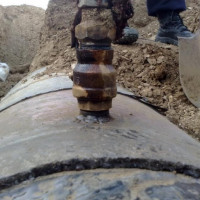 Subtleties of obtaining permission to connect to the gas pipeline - the legislative side of the issue
Subtleties of obtaining permission to connect to the gas pipeline - the legislative side of the issue  Gas connection in the apartment after disconnection for non-payment: procedure and legal subtleties
Gas connection in the apartment after disconnection for non-payment: procedure and legal subtleties 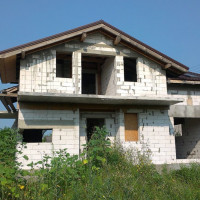 Is it possible to connect gas to an unregistered house: features of the connection and design of “unfinished”
Is it possible to connect gas to an unregistered house: features of the connection and design of “unfinished” 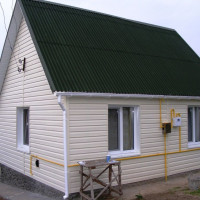 Is it possible to close a gas pipe with siding: the rules and subtleties of masking a gas pipeline
Is it possible to close a gas pipe with siding: the rules and subtleties of masking a gas pipeline  How much does it cost to connect gas to a private house: the price of organizing gas supply
How much does it cost to connect gas to a private house: the price of organizing gas supply  The best washing machines with dryer: model rating and customer tips
The best washing machines with dryer: model rating and customer tips  What is the color temperature of light and the nuances of choosing the temperature of the lamps to suit your needs
What is the color temperature of light and the nuances of choosing the temperature of the lamps to suit your needs  Replacement of a geyser in an apartment: replacement paperwork + basic norms and requirements
Replacement of a geyser in an apartment: replacement paperwork + basic norms and requirements